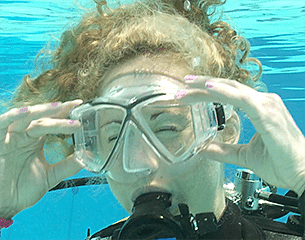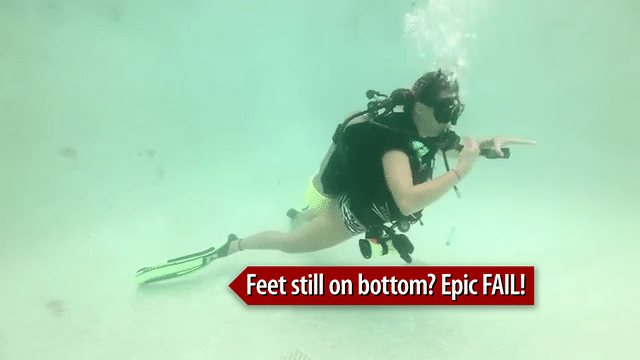 You may remember the recent news story about the nine-year-old boy in New York state who was punished for trying too hard. It seems the county librarian disqualified him from participating in the local book-reading contest because he had read so many books, no one else had a chance of winning. In the librarian’s estimation, allowing him to compete would be damaging to other children’s self esteem.
You may remember the recent news story about the nine-year-old boy in New York state who was punished for trying too hard. It seems the county librarian disqualified him from participating in the local book-reading contest because he had read so many books, no one else had a chance of winning. In the librarian’s estimation, allowing him to compete would be damaging to other children’s self esteem.
As absurd as this notion seems, it reflects an attitude that’s pervasive throughout our culture. That is that no one has the right to be any better than you. It’s what our tax code is based on, as well as our social welfare system. Hard work is to be punished; lack of initiative is to be rewarded. It’s become the new American Way.
Believe it or not, diver training has its own version of punishing winners. It comes in the form of training agencies deciding that only certain skills can be done on certain dives. For example:

- Let’s say your training agency decides that open-water training dive two is to include a mask clear — but only a partial mask clear.
- Being the conscientious instructor that you are, you don’t allow students to progress to open water until they are totally comfortable performing all core skills, including mask removal and replacement, no-mask breathing and a no-mask swim.
- It comes as no surprise then, that on dive two, when you signal your students to do a partial mask clear, several of them simply fully flood and clear their masks.
According to some training agencies’ standards, these students have actually failed this exercise by over performing and must repeat it. Why? Because they dared to be too good and must now be punished.
Here’s another example. On the eve of an instructor course I was staffing some years ago, an incoming instructor candidate came to me in what could only be described as a state of abject terror. I asked her what the problem was. She said, “I can’t do a fin pivot.”
“How can you not be able to do a fin pivot?” I replied. “For someone at your level, this should be one of the easiest skills there is. What happens when you attempt to do a fin pivot?”
“I just hover over the bottom in a horizontal position,” she answered.
I was floored. There was nothing wrong with this young woman’s abilities. If anything, she was among the few instructor candidates who actually got it right.
The so-called “fin pivot” has actually got to be one of the Worst Skills Ever.
- To start, you can only do a fin pivot in shallow water if you are overweighted and your equipment is out of balance — two problems that should never be allowed to occur in the first place. In balanced equipment and with the right amount of weight, students should be doing exactly what the young woman described: hovering gently over the bottom in horizontal trim, with no air in their BCs.
- Fin pivots bear no relationship to any aspect of real-world diving. Not only do they have no practical application, if your feet are touching bottom, it only demonstrates that your buoyancy is not under control. Worse, you are likely causing damage to fragile aquatic life.
- Finally, fin pivots send an absolutely terrible message to students. That is, that it’s not only okay to be overweighted and out of balance, but that buoyancy control is all about pushing buttons. Proper weighting, balanced gear and breath control don’t even enter the equation.

The irony is, the young lady was right about one thing: By demonstrating real buoyancy control, she would likely flunk the exercise. In other words, she would be punished for being a winner.
Fortunately, we were able to work out a way for her to fake inadequate buoyancy skills, and she was able to pass her course. Still, it irked me no end that she had to do so.
The problem with “skills” like fin pivots, Buddha hovers and five-point descents and ascents is that, rather than being steps in a development process, they end up becoming ends in themselves — like one of the 87 Prescribed Forms and Rituals required to achieve ascendency to a Higher Level. There is no place in diving for this sort of nonsense.
Do your students a favor: Get them in balanced gear. Take the time to get them properly weighted for neutral buoyancy in confined water. Then stop worrying about nonsense skills like fin pivots and Buddha hovers.
With the right amount of weight, all you should need to do is tell your students to experiment with adding a very small amount of air to their BCs when they venture into the deep end, remembering to vent it when they return to shallow water. Make sure they know ahead of time how to quickly and effectively vent air from their BCs, should they overdo it. Then have them practice until they get it right.
You won’t need to add a special skill to your repertoire for Arriving at the Bottom Neutral. That will happen automatically, as will hovering. A hover is what should happen any time your students are neutral (which they should be at all times) and they simply stop kicking.
Do this and your students will all be winners. Just don’t let your training agency punish them for doing so.
